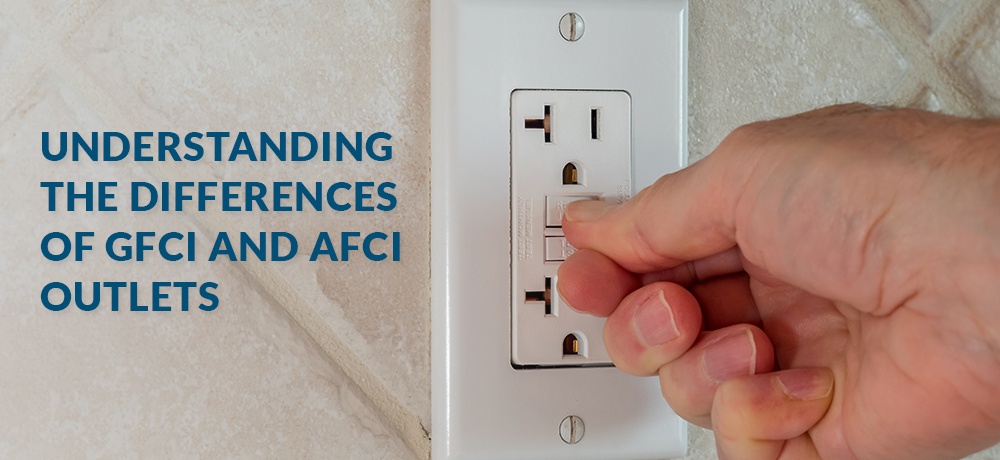UNDERSTANDING THE DIFFERENCES OF GFCI AND AFCI OUTLETS

What would we do without electricity? Most of us would experience a crisis if we had to adjust to life without electricity at home or work, especially since nearly every activity in our day-to-day lives depends on electricity, whether directly or indirectly.
Fortunately, electricity in homes and businesses is much safer today than it was in years past. Many of the older homes that we inspect lack the safety features that are standard in new homes. Fault circuit interrupters are one way that electricity has been made much safer. Perhaps the most widely known interrupter is the ground fault circuit interrupter (GFCI), though another type of interrupter – the arc fault circuit interrupter (AFCI) – is also commonly found in homes and businesses.
GFCIs are most seen in wet areas, such as bathrooms, kitchens, exterior and near other water sources. In fact, electrical codes have required a GFCI for electrical outlets located close to water sources for decades. A GFCI works by measuring the electrical current, detecting if the current going out and returning back is balanced. When the GFCI detects an imbalance in the current, it trips the circuit and cuts off the electricity. This near-instant break in the circuit can save lives.
An AFCI also offers cut-off protection like a GFCI but is designed to detect electricity leakage instead. This leakage can occur because of loose or broken wires. Wiring that is faulty can lead to a dangerous electrical fire. AFCIs detect leakage in electrical current and interrupt the circuit to prevent an electrical fire from starting in areas behind the wall where corroded or frayed wiring cannot be easily seen.
Originally the Ontario Electrical Safety Authority required bedrooms circuits to have AFCI beginning in 1999. Today, all branch circuits supplying 125 V receptacles rated 20 A or less (except kitchen counters and refrigerators, bathrooms, and sump pumps) require an AFCI.
Using technologies like GFCI and AFCI outlets have helped to make electricity in our homes and businesses safer overall. These devices are relatively inexpensive and can easily be installed by a qualified electrician or a knowledgeable DIYer.
A professional home inspection can verify whether your home is properly protected with AFCI and GFCI outlets. Many people only consider a home inspection when preparing to purchase a property, but periodic inspections can help identify any problems or dangers that might develop over time from storms, changing weather conditions, or even just normal wear and tear.
Call Elementary Property Inspections at 289-686-9482 and schedule a home inspection at your property today.